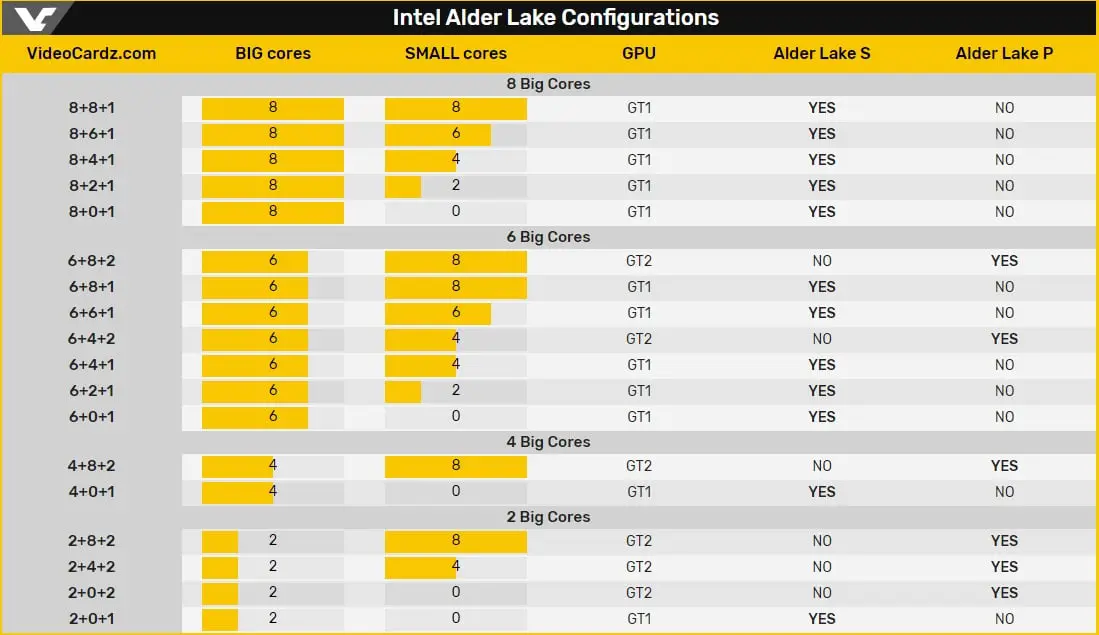The Intel Alder Lake-S architecture will give life to the twelfth generation of Core processors and will arrive, according to the latest information, during the second half of 2021. This means that we have yet to see a new generation, Rocket Lake-S, the latest generation of Intel general-purpose processors that will use the 14 nm+++ process.
- AMD could grab 50% of the CPU market share by mid-2021, analysts say
- Intel confirms the theme of its upcoming event: Intel DG1 and Tiger Lake
- Intel delayed its 7nm chips until 2022
Why is it called 14nm+++?
These new processors will use the 14 nm process, but will introduce Willow Cove cores adapted to this process, which means that they will offer an increase in the IPC and that they will have, therefore, a higher performance than the Comet Lake S processors running. at the same frequency and with the same number of nuclei. It is an advance that justifies, more than enough, that additional “+”, since its performance will be superior to that of the Core 10 based on Comet Lake-S.
The Rocket Lake-S processors should arrive before the end of 2020, since as we told you at the time Intel will only launch new processors manufactured in the 10nm process during 2021, a maximum that applies to both general consumption CPUs and those for portable and for professional teams.

Intel Alder Lake-S: “big.LITTLE” structure with up to 16 cores
Intel is going to use a very popular structure within the mobile sector, but unusual within the x86 processor area. Intel Alder Lake-S processors will be divided into two large blocks of cores, a high-performance one consisting of Core cores (Golden Cove), and the other consisting of Atom cores (Gracemont).
The idea that Intel has in hand is, in essence, the same that we saw with the Lakefield processors, which use that same division into high-performance and low-power cores, although in a very curious ratio: 1 + 4. The four low-power cores take care of basic tasks and moving the operating system, while the high-performance core only runs when it is really needed.
In the case of Intel Alder Lake-S processors we have a larger configuration of cores, although as we have seen in a recent leak, Intel plans to start from a very modest base, two cores, and go up to a maximum of sixteen cores. In the attached image, courtesy of VideoCardz , we can see the core configurations of the Intel Alder Lake-S (desktop) and Intel Alder Lake-P (laptops) processors. The first figure indicates the high-performance cores, the second the low-power cores and the third the presence, or not, of an integrated GPU.
As we can see, there will be versions with eight high-performance cores, six high-performance cores, four high-performance cores and two high-performance cores, accompanied by eight, six, four or two low-power cores, depending on each specific model. Interestingly, we also see variants without low-power cores.
Most likely, the mid-range is made up of models with 6 high-performance cores and 6 high-consumption cores, a model that could be the equivalent, within its generation, to the Core i5 10600K.
We should add that the Intel Alder Lake-S processors will use the LGA1700 socket, which means that to use them a new motherboard will be needed.





